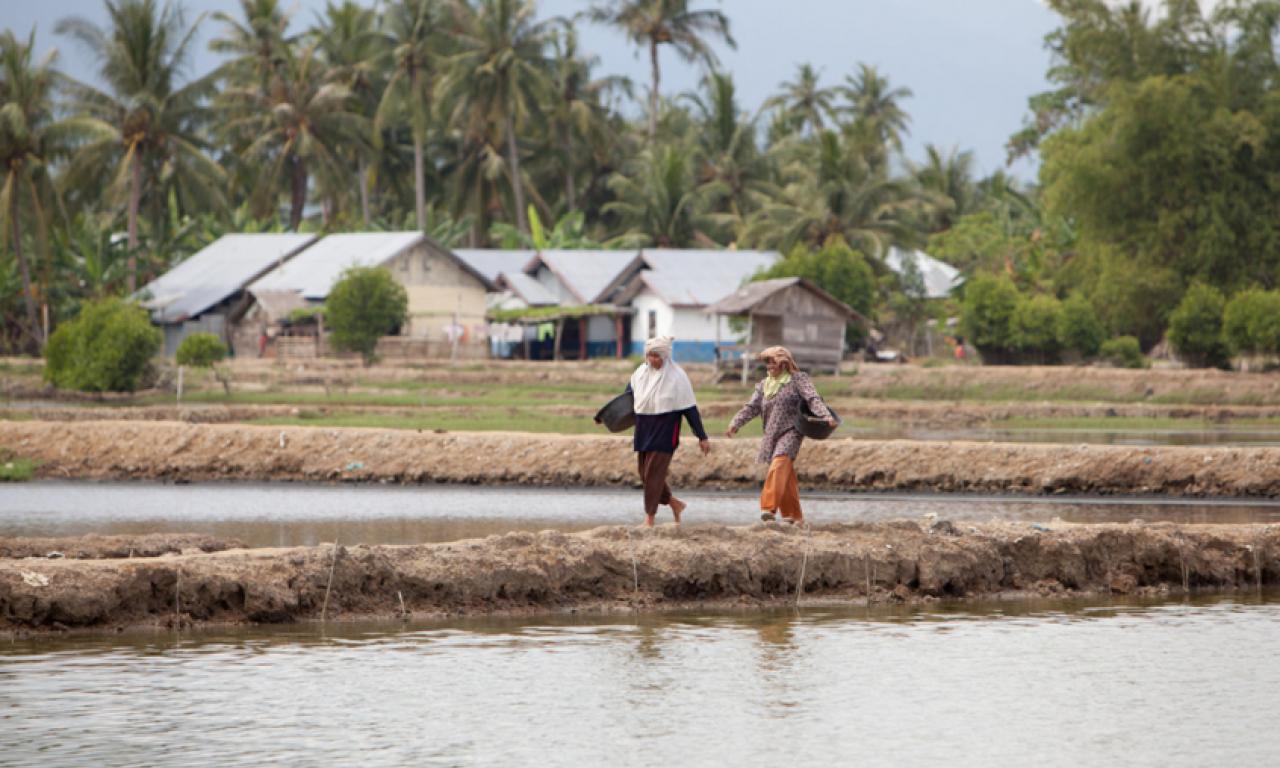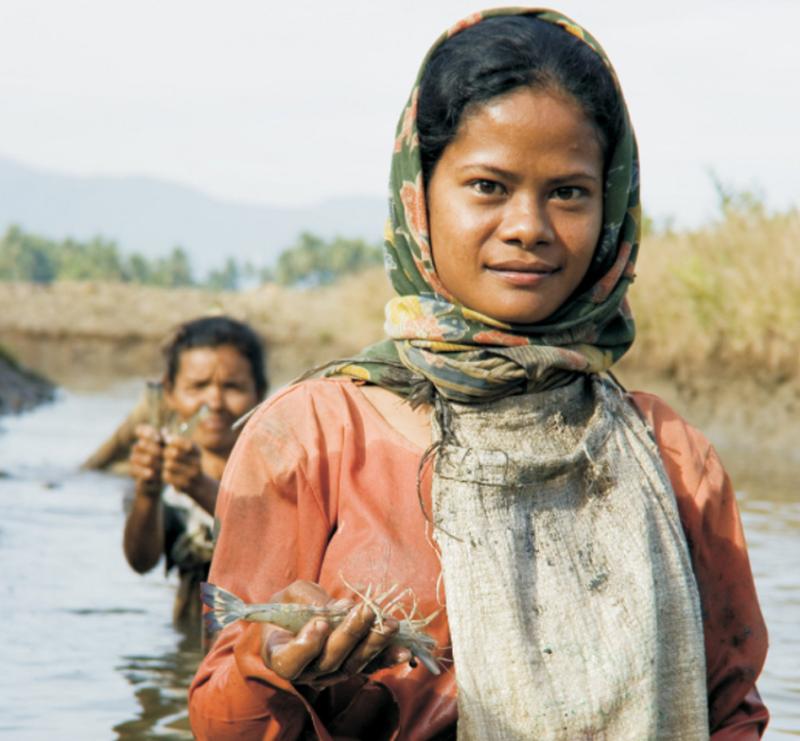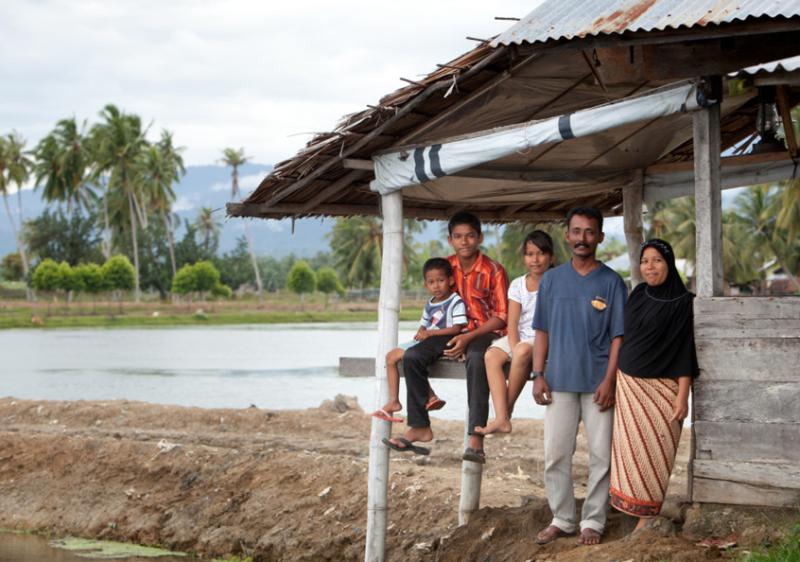
Women make a significant contribution to aquaculture in Indonesia, yet they face more barriers in and receive fewer benefits from the sector than men. These are the findings of new case studies carried out by WorldFish and the Food and Agriculture Organization of the UN (FAO) as part of the CGIAR Research Program on Fish Agri-Food Systems (FISH). Closing this gender gap will enable the aquaculture sector to enhance women’s social and economic empowerment, and drive economic development in the country.
Recommended publications
- Women's empowerment in aquaculture: Two case studies from Indonesia
- Women's empowerment in aquaculture: Two case studies from Bangladesh
Women make a significant contribution to aquaculture in Indonesia, yet they face more barriers in and receive fewer benefits from the sector than men. These are the findings of new case studies carried out by WorldFish and the Food and Agriculture Organization of the UN (FAO) as part of the CGIAR Research Program on Fish Agri-Food Systems (FISH). Closing this gender gap will enable the aquaculture sector to enhance women’s social and economic empowerment, and drive economic development in the country.
Indonesia is one of the top 10 aquaculture-producing countries in the world. Valued at $8.3 billion, the sector supports the livelihoods of over 1.6 million households, and benefits another 1.3 million people involved in processing and 4.8 million in marketing.
However, the studies, which were conducted in two villages in Barru District, South Sulawesi and Sidoarjo, East Java, found that involvement in shrimp farming and milkfish processing enterprises was gendered, and the degree and forms of participation varied with the nodes and types of aquaculture.
For example, in the milkfish processing case, women were found to have direct opportunities in the sector, in particular by being a milkfish business owner or a gutting and deboning worker. In shrimp farming, meanwhile, women can typically only access work as casual laborers who sort and grade shrimp. The studies revealed that there are multiple factors, including gender norms and socioeconomic status, influencing if and how women engage—and their ability to succeed—in different nodes and roles in aquaculture.

Factors shaping engagement in aquaculture in Indonesia
Women are seen as the caregivers, with primary responsibility for domestic and family work, and are expected to remain close to the household. This means that they often take on lower-paying roles, which also tend to be informal and insecure. In the shrimp case, this made it difficult to identify even two women who were shrimp farm operators—even though the area had abundant shrimp farming. In the milkfish case, the study found that women were involved in milkfish processing through home-based businesses. Such sociocultural gender norms, which define how men or women should behave, have a large influence on women’s involvement in aquaculture in Indonesia.
Men, in comparison, are seen as the ‘head of the household’, which enables them to determine their wives’ involvement in aquaculture. For example, women in the case studies had to ask their husbands’ permission to participate in a training course; men did not have to ask their wives. Similarly, women—but not men—reported that they missed significant opportunities to develop their skills and businesses because of this and their (gendered) domestic responsibilities.
Socioeconomic status also influences women’s engagement. For example, in the case studies, poorer women could engage in the shrimp sector—but only as paid workers and casual laborers, and on the farmer’s terms. Only women from wealthier families could afford the investments and had access to the land and ponds required to start shrimp production businesses.
The study also surfaced the potentially potent role that external interventions, such as trainings and technologies, can have in the development of a sector attractive to women. While training as a tool was limited overall by the constraining gender norms above, the cases indicated the importance of multifaceted approaches to capacity development, in particular those that help women build both their human capital (such as entrepreneurship) and their technical skills (deboning, processing).
These same factors that affect women’s engagement in aquaculture were also found to be significant in shaping women’s outcomes, successes and empowerment. Interestingly, women identified one further factor that is critical to their success and empowerment: spousal and family support.
Positive and negative outcomes
Regardless of the type of aquaculture and their level of involvement, the women in the cases reported that participating in the sector has many benefits.
Most notably, it provides a vital source of income, enabling women to meet their daily needs, improve their financial security and invest in the household, the children’s education or in businesses.
In addition, the women identified that participating in aquaculture has boosted their self-esteem and confidence. It has also enabled some women to move beyond household decision making to making decisions in the business sphere.
But this empowerment, defined by researcher Naila Kabeer as ‘the expansion of people’s ability to make strategic life choices in a context where this ability was previously denied to them,’ remains arguably limited in scope.
For example, women’s access to higher-value roles is limited compared to men, for the reasons outlined above. The few women in the cases who stretched gender roles by becoming shrimp farm operators faced gendered challenges including social criticism.

Adding to these limitations, women face greater time burdens when engaging in aquaculture. Despite taking on paid work, women remain responsible for caregiving and domestic and family duties. Respondents indicated that this results in women having less time to rest and recover than men and at times working extremely long hours.
Recommendations for policy, research and interventions
To address the critical factors limiting women’s involvement in and benefits from aquaculture, solutions must focus on addressing—and transforming—the underlying normative barriers.
The research suggests that the Indonesian government could contribute here by focusing policy support on ensuring gender-equal access to land and pond ownership, through inheritance and/or title registration, and to financing and collateral.
Non-governmental organizations and the FAO, together with research agencies supporting aquaculture and aquaculture intensification, can play a role too.
For example, training and support programs, including for higher-return opportunities in the value chain, should be explicitly targeted to women as well as men. More fundamentally, these programs would benefit from not only including women but also incorporating women and men in strategies to overcome the identified gender barriers. This includes promoting sharing of domestic and care work to reduce women’s time burdens and championing women in nontraditional roles in the sector such as shrimp producers.
In addition, aquaculture and development interventions should address the multiple factors linked to women’s empowerment, such as technical skills, access to assets (such as production equipment) and network development (expanding professional and market/client connections).
Together, these policy and intervention strategies could contribute to leveraging more inclusive and substantive empowerment for women in and through aquaculture in Indonesia.
